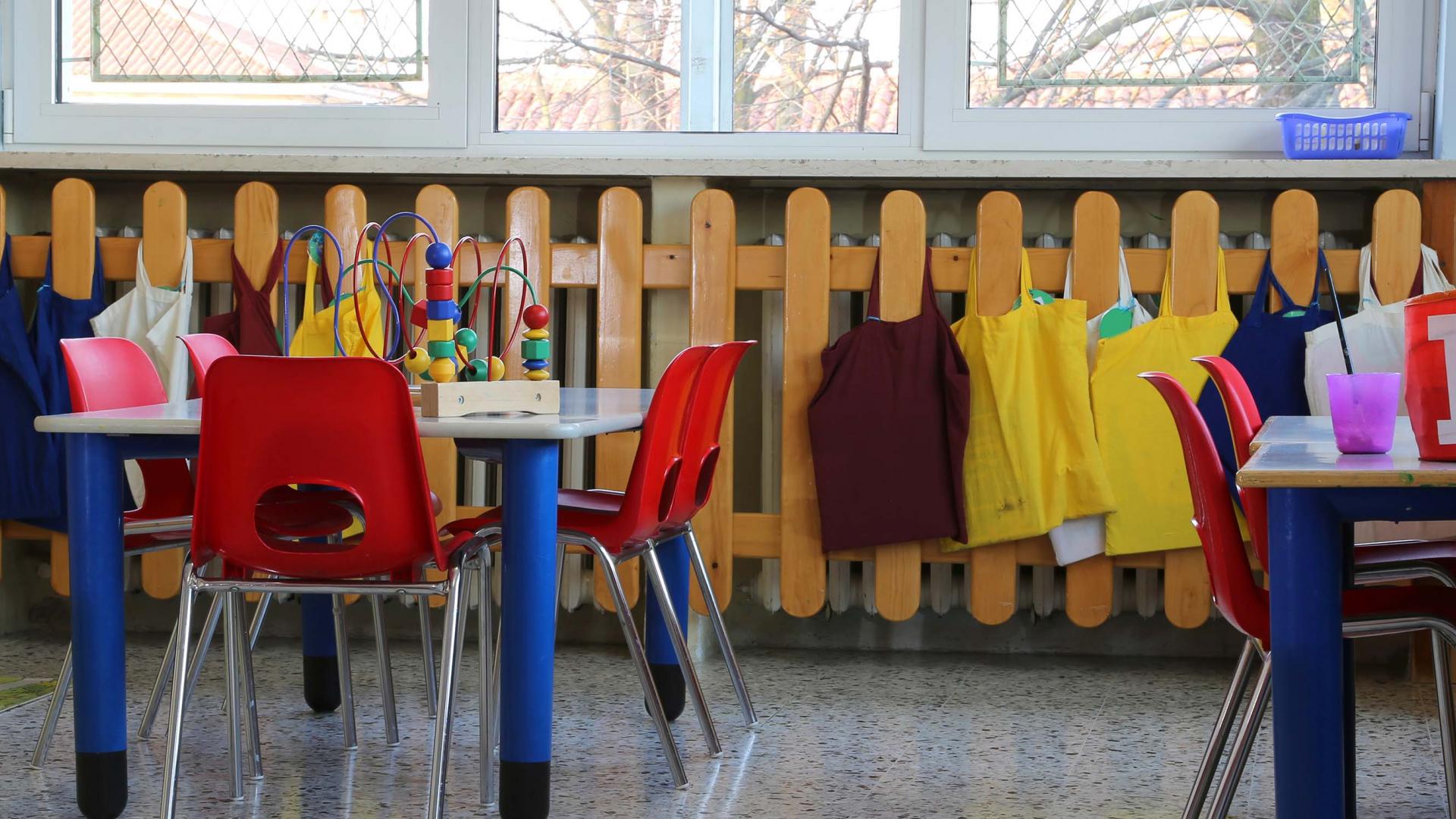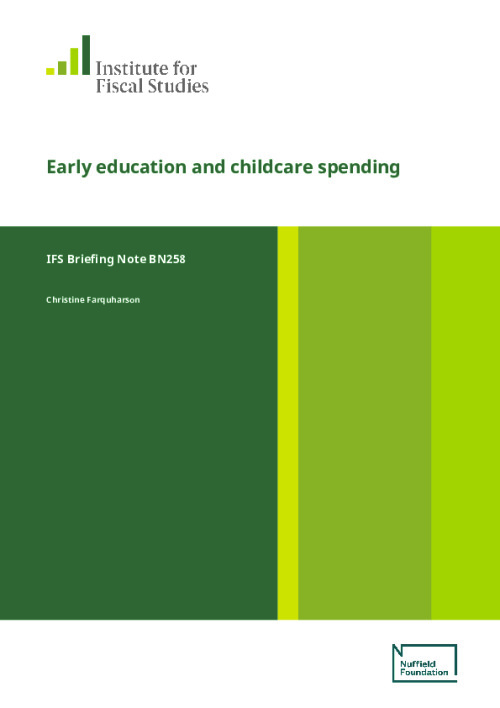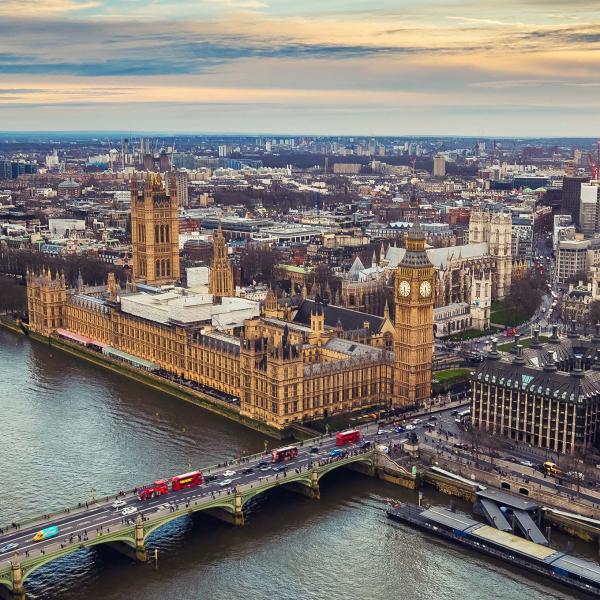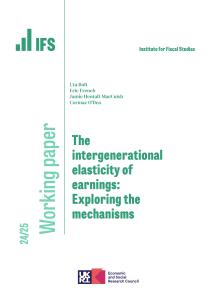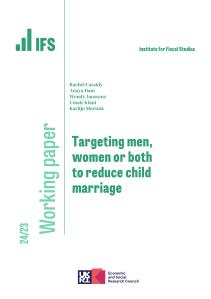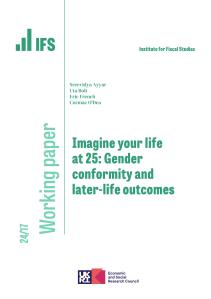Early education and childcare has also become an increasingly important part of the education spending landscape. Between 2009–10 and 2018–19, annual spending on free childcare for 3- and 4-year-olds rose by almost £1,900 per child (in today’s prices) and we spent £3.3 billion last year on providing these free places. Adding in spending on free childcare for disadvantaged 2-year-olds, childcare subsidies for low-income working families through the benefit system, and the cost to the Exchequer of tax relief on childcare vouchers and tax-free childcare, total public spending on childcare stood at around £5.4 billion.
This briefing note first sets out the structure of England’s system of support for early education and childcare, which includes the education, tax, and benefit systems. It then outlines how spending in each of these programmes has changed over time, before analysing what this can tell us about policymakers’ priorities in these areas. It then gives a quick overview of spending on Sure Start, another important early years services, before providing costings for some indicative policies in the early years and childcare area.
Key findings
- Spending on free childcare has risen quickly since 2009–10, even as other stages of education have seen cuts. Spending on free childcare rose from almost nothing in the 1990s to £1.6 billion in 2009–10 (in 2019–20 prices). Since then, it’s increased by more than 130% and now stands at £3.7 billion.
- But spending per hour of free childcare has grown much more slowly. Since 2004, total spending on free childcare for 3- and 4-year-olds has more than doubled as the entitlement was extended to cover more free hours. But spending per hour – the money that childcare providers actually get to deliver the free hours – is up just 20%. Spending per hour did increase by 7% in 2017 – a third of the increase since 2004.
- Free childcare is popular among parents and boosts the incomes of families with young children. However, evidence suggests that it only leads to a small increase in the number of mothers in paid work, and even that only applies to mothers whose youngest child is eligible for full-time childcare in school. There is also little evidence of benefits for children’s development.
- Looking more broadly at childcare subsidies through the tax and benefit systems along with free childcare, spending is increasingly targeted at working families, rather than low-income children. Support for low-income workers fell from 45% of total childcare spending in 2007 to just 17% ten years later, and the share of childcare spending targeted at low-income families – working or not – stood at 27%. On the other hand, support for working families – regardless of their income level – has increased from 10% of total childcare subsidies to 25%, following the introduction of 30 hours’ free childcare.
- Spending on other early years services, like Sure Start, has seen big cuts. Since its peak in 2010, Sure Start spending has in real terms fallen from £1.6 billion to £600 million in 2017. Spending on childcare support through the benefits system has also lost out over the last decade, relative to other forms of childcare support.
- Policymaking in the early years should be done with an eye not just to costs, but also to the complexity and effectiveness of the system. Policymakers need to be clear about how their proposals fit with the existing landscape of early years services and with the twin goals of helping parents to work and supporting children to achieve their potential. It’s not enough to assert that any programme will automatically meet both targets: internationally, childcare programmes rarely if ever both support parental employment and benefit children’s development.
